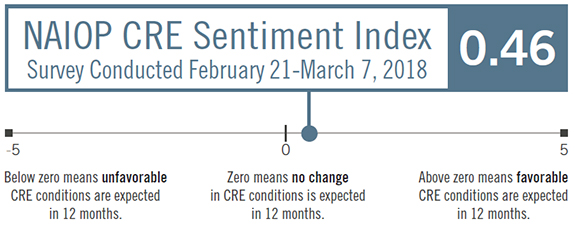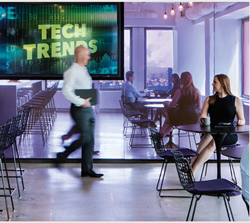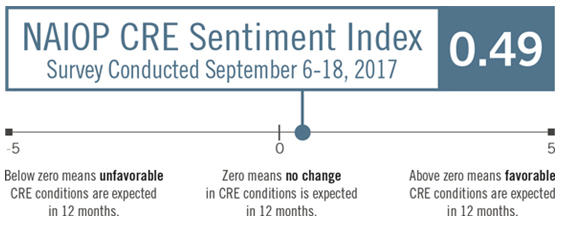Posted on May 31, 2018
The NAIOP Research Foundation has published the NAIOP Office Space Demand Forecast for Q2 2018.
Key Takeaways
- The U.S. office markets absorbed just 1.3 million square feet on a net basis in the first quarter of 2018, according to CBRE.
- This performance represents a significant conundrum, as every economic indicator used to forecast absorption performed at or above the forecast level.
- While the first quarter reading may be a one-time anomaly, it cannot be discounted that a structural shift in the office space market has or is occurring.
- The forecast for net absorption of office space has been reduced to 8.4 million square feet per quarter for the remaining three quarters of 2018.
On a positive note, many developers, lenders, and even tenants are not over-expanding or being overactive, meaning that there is a low likelihood that there will be excess space that they will need to vacate in a downturn.






 According to a recent
According to a recent 
 Development and construction of new commercial real estate in the United States – office, industrial, warehouse and retail – generates significant economic growth at the state and national levels. This annual study, “The Economic Impacts of Commercial Real Estate,” published by the NAIOP Research Foundation, measures the contribution to GDP, salaries and wages generated and jobs supported from the development and operations of commercial real estate.
Development and construction of new commercial real estate in the United States – office, industrial, warehouse and retail – generates significant economic growth at the state and national levels. This annual study, “The Economic Impacts of Commercial Real Estate,” published by the NAIOP Research Foundation, measures the contribution to GDP, salaries and wages generated and jobs supported from the development and operations of commercial real estate. With
With  Office building owners have found that to remain competitive in today’s marketplace, they must enliven their buildings by offering more amenities and adding vibrancy to the common areas. Some have introduced a range of new amenities, including outdoor workspaces and food trucks, and they have also programmed areas with happy hours, featured speakers and other activities. The common element in these amenities is that they all “activate” the common space by creating opportunities for socialization among tenants and the opportunity to work in areas beyond the tenant’s suite.
Office building owners have found that to remain competitive in today’s marketplace, they must enliven their buildings by offering more amenities and adding vibrancy to the common areas. Some have introduced a range of new amenities, including outdoor workspaces and food trucks, and they have also programmed areas with happy hours, featured speakers and other activities. The common element in these amenities is that they all “activate” the common space by creating opportunities for socialization among tenants and the opportunity to work in areas beyond the tenant’s suite.
